When children have a say in what they learn, they develop a love of learning and are more likely to retain information when it interests them. When a child has a choice, they develop a sense of self. This can also spark creativity. When a child learns about a subject that is interesting to them, they are more likely to become creative.
Whether your child attends a traditional Montessori school or not, you may want to consider bringing some Montessori methods and activities into the home. But first, let’s answer some of the most asked questions around Montessori and the Montessori method.
What does Montessori mean?
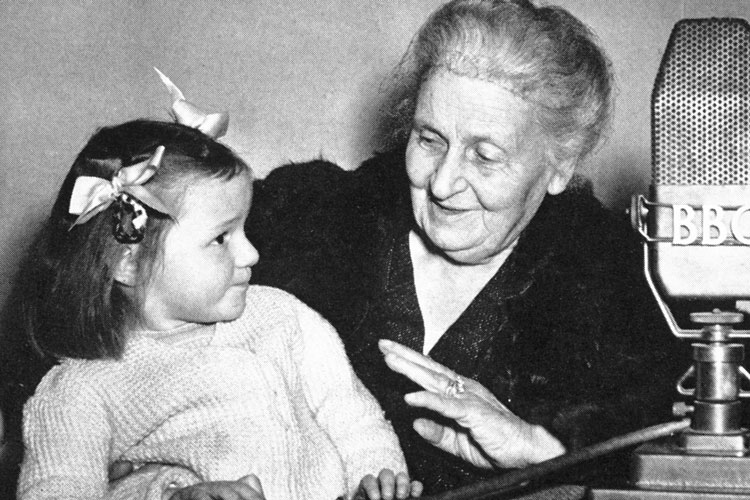
Montessori was created by Maria Montessori. She was the first woman in Italy to receive a degree of Doctor of Medicine and believed that education begins at birth. In her opinion, and based on her extensive research, the first six years of life are the most important because of a child’s capabilities. She believed that too often, the early years (from birth to six years) were wasted by parents and teachers who feel a child is too young to learn.
The Montessori Method is simply child-led learning. If a child has a strong interest in a specific subject, learning materials are tailored to encourage the child to discover more about that particular topic. When children have genuine interest, they will continue to want to keep learning and will retain all of the information.
Although there are Montessori schools that teach students clear through high school, most Montessori schools are typically preschools set up for children 0-5 years of age.
Is Montessori school Catholic?

There are specific Catholic Montessori schools, however, traditional Montessori schools do not teach about Jesus or any religions. Although, they typically follow the exact curriculums as Catholic Montessori schools. Maria Montessori was a strong and practicing catholic, but her Montessori curriculum did not teach about Catholicism.
Is the Montessori method effective?

Montessori is very effective, especially in the preschool years. One of the biggest benefits is that children learn at their own pace. It’s not a ‘one size fits all’ teaching method. The plans and curriculum are based on each child’s level so they are not rushed into learning something that they are not ready for. Children can also choose to learn more than their peers if they wish. Montessori gives the child choices and when a child has a say in their education and activities, they are more likely to pursue their own interests and become successful at mastering a skill.
Benefits of Montessori school.
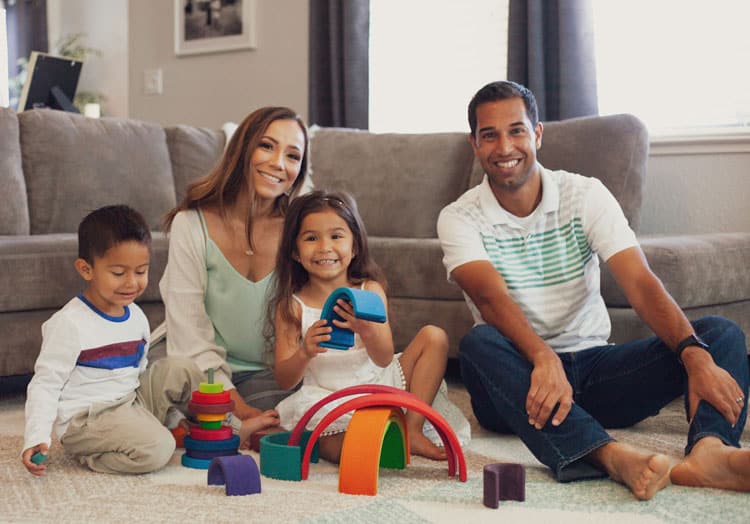
A Montessori method preschool sets a great foundation for children. Below are the top 5 benefits of Montessori preschool:
–Individualized to each student.
In a Montessori classroom, there are activities or jobs that all children can do. The children that are excelling have a chance to take on more challenging work as well, if they choose. Just like children who are not ready to learn something can choose not to do that job.
–Inspires creativity.
Because children have learning freedom (with limits), they are more likely to be creative. Many Montessori toys are open ended and can be manipulated in many ways depending on the child’s imagination.
–Teaches organizational skills.
When children finish with an activity, they put it back before selecting a new one. This creates a sense of order and children thrive off of order and routine. They feel a sense of responsibility, pride and self-discipline.
–Helps develop muscle groups.
Through everyday activities such as stringing beads, pouring job and playing outside, for example, children develop fine and gross motor skills, which they need in everyday life. These include things like pouring water, buckling up your jacket, tying shoes, writing with a pencil, etc.
Montessori children are often grouped with children who are younger or older than they are. Because of this, Montessori classrooms foster peer-to-peer learning. The older children learn to help the younger children and therefore build self-esteem and confidence. They all learn from each other.
How to prepare a Montessori style home “school”.
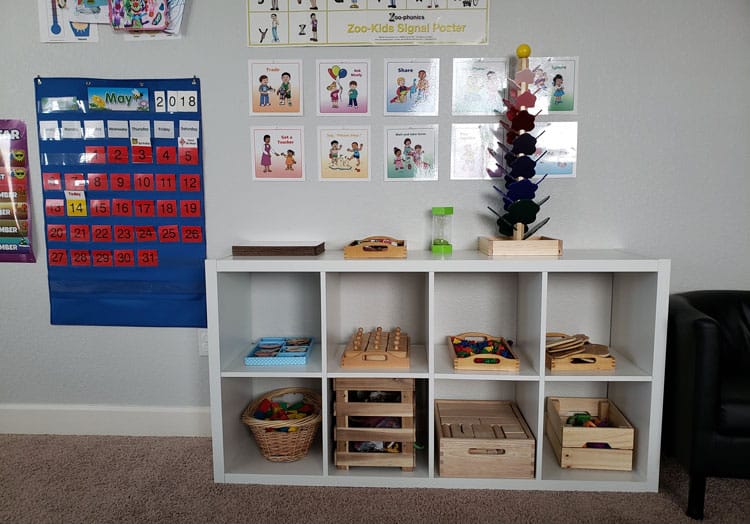
Whether your child attends a traditional Montessori school or not, you may want to consider bringing some Montessori methods and activities into the home. If you have interest in setting up a dedicated space for your child(ren), here are some great suggestions and things to think about!
It’s important to have a specific space or room for your child to learn in. Everything should be proportioned to your child’s size and may even change over time as they grow.
Activities should be made easily accessible for your child so that they can help themselves. Some items to include in your child’s room should be:
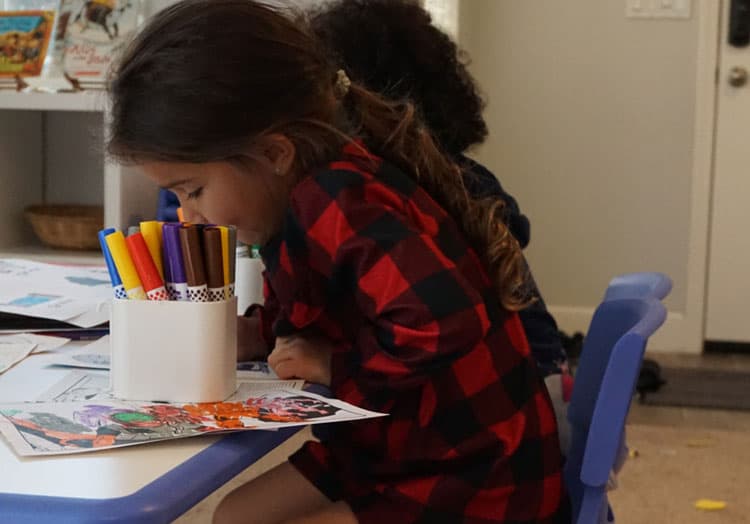
- A table and chair(s) proportionate to your child’s size. Make sure they are lightweight enough so that she/he may carry them with ease. Ikea has great wooden tables that are both affordable and lightweight!
- Shelves low enough for her/him to reach. Do not put your child’s activities in bins or boxes that are out of their reach.
- Low hooks for clothes, dress up, bags, etc.
In this room or space, your child should be able to choose what Montessori activity they would like to ‘play’ with. It is also important to provide your child with an introduction or an overview to the activity before they are expected to know how to do it.
If you have more than one child in different stages of learning, it is okay to gate off a section within the room for your youngest child. This may allow your older children to work with smaller Montessori objects that are not as safe for younger children. It is important to know that it is normal to always keep changing your space to best benefit your child at the stage of learning they are in.
What does a child learn by using the Montessori method?
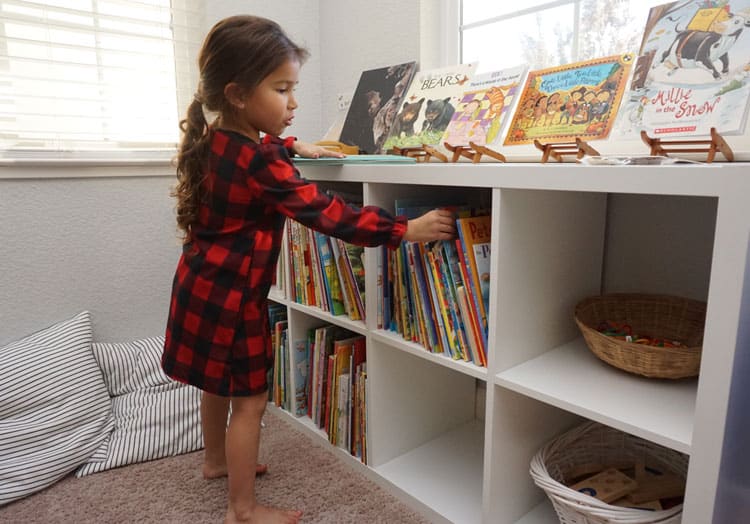
The five key areas of learning in a Montessori environment include; Practical Life, Sensorial, Language, Mathematics and Culture.
In a Montessori classroom, there are five areas to consider in order to prepare the environment for students. All of these Montessori method areas are often blended together to maximize quality and learning in the classroom.
–Practical Life
This encourages the children to develop a sense of responsibility and respect for their environment. It also helps develop the care of self. Practical life is great for developing the children’s motor skills that they will need for every day tasks, such as washing hands, buttoning up their coats, washing dishes, and more.
–Sensorial Development
This focuses on whole child development. For example, a sensorial activity you may see in a Montessori classroom is wooden blocks. This job helps the children develop an understanding for size, which in turn helps them succeed in math. You may also see color matching, which helps children identify colors and develop visual discrimination.
–Mathematics
This is exactly what it sounds like, only at the preschool stage it can be much simpler. For example, in a Montessori preschool classroom you may see tracing boards, sandpaper numbers, and puzzles. These activities help children learn the shape of each number or letter while working on hand-eye coordination.
–Language Arts
Providing a literacy-rich environment sets the children up for success. Having a classroom library, a phonics program, story time (by the teacher or the student) is critical. Dialogic reading is also very important and beneficial for the students. When reading a book, Montessori teachers are sure to discuss pictures, experiences, hypothesis, etc.
–Culture and Science
Nature, science and culture helps children understand their place in this world. Montessori classrooms often have natural or realistic materials. For example, when children learn about the lifecycle of a butterfly, there are live caterpillars in the classroom. Children get to experience watching them grow, make their chrysalis and finally watch as they emerge into butterflies. This visual experience helps small children understand concepts better. For culture, holidays are discussed and different foods and photos are brought in from different places all over the world. Again, the hands-on experience helps the children develop an understanding and respect for many different cultures.
Common Montessori method activities to add to your child’s daily routine.
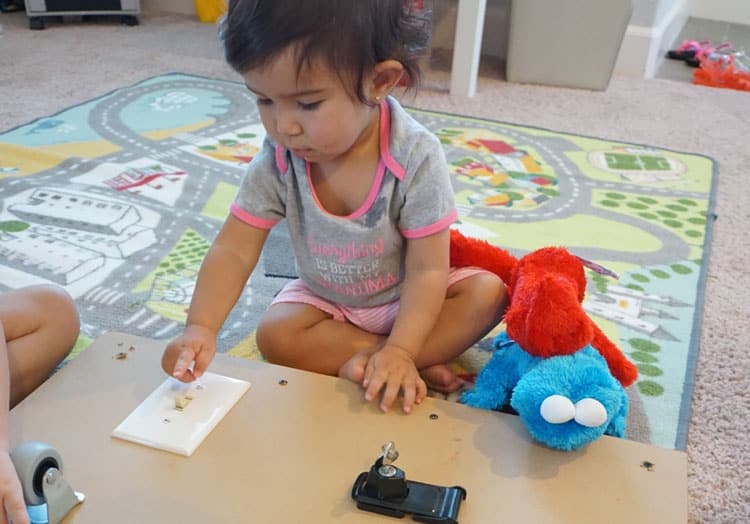
Pouring job. You will need a small tray, a small pitcher and a bowl. This is exactly what it sounds like. Your child will practice practical life by pouring rice, water or anything else to practice their hand muscles. This also teachers self-reliance. Once they master this, they can start pouring their own milk or water for themselves and possibly other family members at the dinner table.
Bead Stringing. You will need a tray, multicolored beads and string or lace. Depending on the age of your child, he may group all like colors together, string in a pattern, etc. This job helps with fine motor skills which will then help them with future and more important tasks, such as holding a pencil or marker.
Cutting. For this activity, you will need blunt end scissors, wastebasket and paper. Show the child how to properly hold and use the scissors. This exercise also helps your child with fine motor skills and hand-eye coordination.
Painting and Coloring. This can be done at any age with supervision. You will need washable crayons, markers, paint and paper. This job allows the child to have as much creative freedom as they would like.
Dropper and Water Color Mixing: You will need a dropper, water colors (I use the 3 primary colors) and a clear egg plastic container. This job helps children with their fine motor skills and helps them learn color theory. They will discover what two primary colors make secondary colors!
Sensory Board: You can create this however you’d like. You can find Montessori sensory boards on Etsy (for over $100) or make your own for about $40. Materials for a sensory boards are available at any home improvement store. An example of items on aa sensory board: a light switch, a wheel, different kinds of locks, a key for children to practice locking and unlocking, etc.
Encourage a great love for nature.
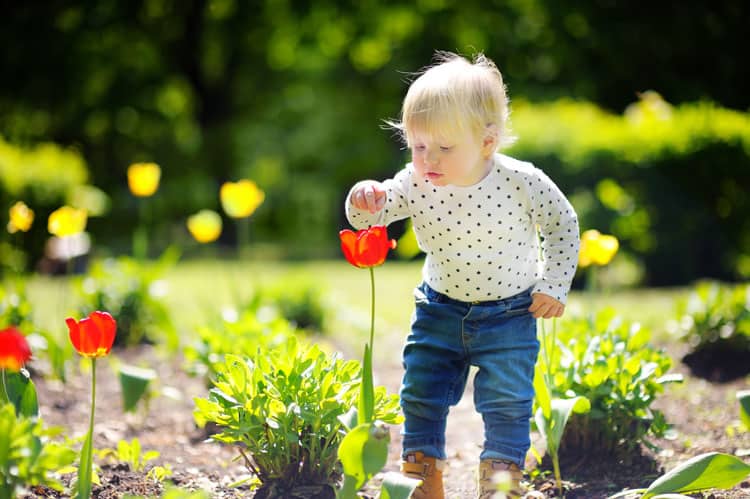
Maria Montessori put great value on the connection between nature and the child. If possible, plant a garden with your child. Walk them through the process of planting, watching seeds sprout, weeding, watering, and finally harvesting. This teaches the child patience and responsibility which is truly important with the Montessori method. You can make a nature tray or nature table in your Montessori room. On this table, shelf or tray you would lay out leaves, flowers, plants, dirt, rocks, sticks, pictures of bugs, landscapes and more.
Montessori method tips:
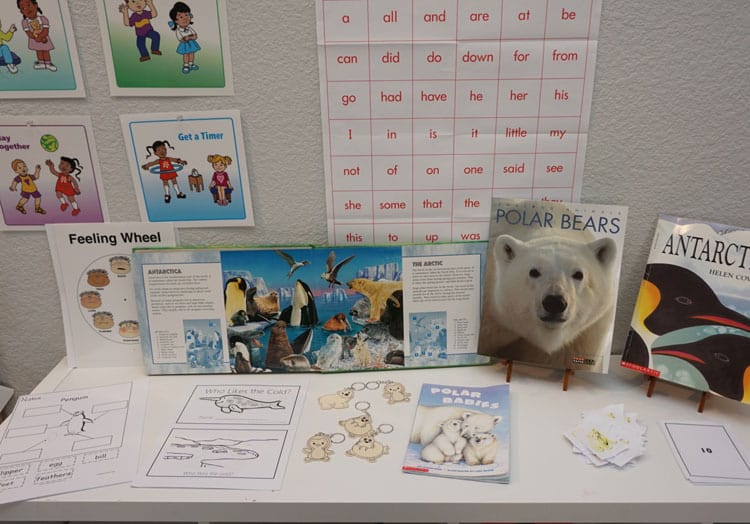
- To keep costs low, purchase trays or baskets and other small items from the dollar store, thrift stores or online! The natural wood trays are great, and can typically be found for cheap at thrift stores.
- If your child is showing frustration with a certain job or activity, put it away for a while. Pull it out after 3-6 months to see if their skills have developed or if their interest has changed.
- Make a cozy reading nook for your child next to the book shelf. This encourages children to read more. If they don’t know how to read yet, it builds a love for books!
How can the Montessori method teach your child to be respectful?
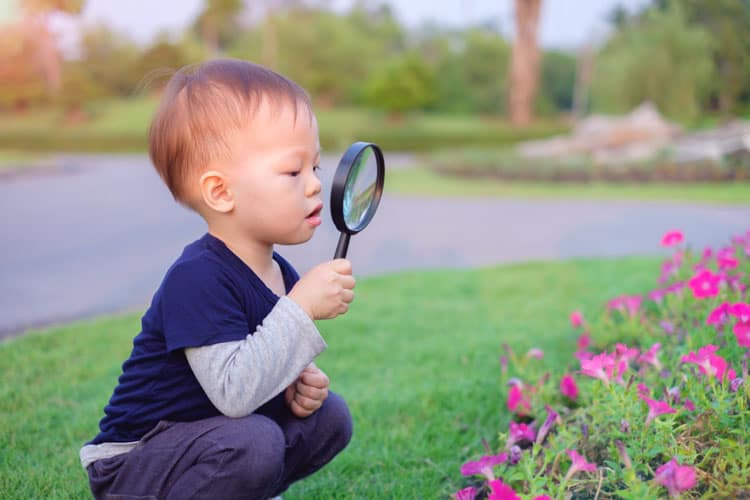
It is important in the Montessori method for your child to respect their work and materials so that they can learn respect all things, including other individuals.
One Activity at a Time. This is self-explanatory. Once your child completes an activity, he can bring it back to the shelf, or back to where it belongs and find another if he chooses. It may take a few times for your child to learn this, but keep encouraging them to return work it its original place.
Walking Feet. When walking to the bathroom, picking a job from the shelf or anytime your child is inside they are to use walking feet which helps the child find concentration and purpose in his actions.
Inside Voices. Maria Montessori said she never expected it to be completely silent in a Montessori classroom, but to use quiet voices so that there is no interruptions to one’s concentration. Try to make children aware of how loud they are and how they may be affecting others with their voices.
Be Gentle. This is important when talking about books, activities, plants, etc. Give children a porcelain tea set, for example, to help them learn and practice how to handle objects with care. If something breaks, it’s a great cause and effect teaching moment.
Use your words. There will be inevitable tantrums, but it is important to reassure children that using words is best to describe feelings instead of throwing, hitting, yelling, etc. This is a great opportunity to go over role-playing with your children and talk about how you would handle a similar situation.
If children are not behaving or following rules give them gentle reminders of the rules. If their behavior does not stop, then sit them in a chair until they are ready to apologize and be respectful of others.

My name is Danitzia Singh (@themomtessorilife) and I have had my own Montessori preschool for nearly five years—for as long as my daughter has been alive! Before having children I worked for the Department of Education and worked part-time as a Montessori preschool teacher while getting my undergrad at Sacramento State University. Originally, my plan was to teach first grade since that is what my degree is in—Liberal Studies. After working with preschoolers for years and having two children, I am glad I went down this path. This has been the best decision I have ever made for my two children.


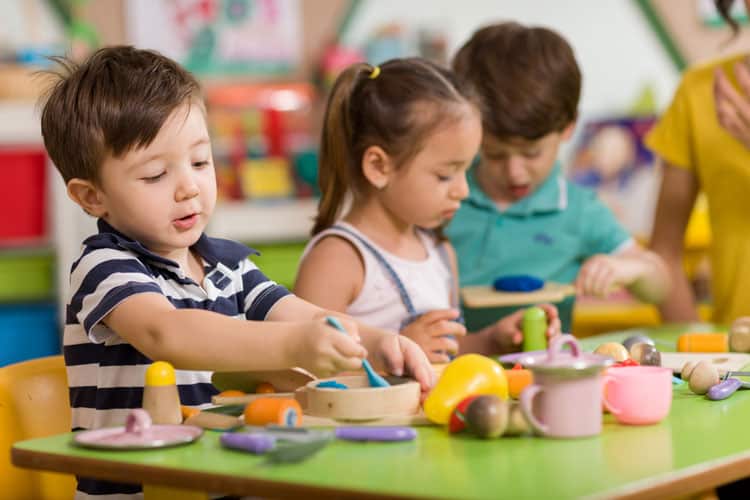
My daughter is starting Montessori this fall face-to-face. I’m excited to set some of these things mentioned in my home. Thanks for this.
A wonderful article. I’m a hugh montessori fan
This website was… how do you say it? Relevant!! Finally I have found something that helped me. Kudos!|
I blog often and I really appreciate your information on this topic.
My spouse and I stumbled over to your site. So glad we found it. We are huge Montessori supporters and are looking into a school for our toddler.
Oh my goodness! Awesome article dude. Thanx!!|
The montessori method is so great. I’m glad you touched on if it was religious or not. When I mention that my kids attended montessori school, I often got the question of if it’s catholic. NO people, it’s not a religious school!
Check with the restore in your area to get cheap desks for the kids.
love these tips. my kids to go to a montessori school but i didn’t think to do it at home too.
Howdy I am so grateful I found your site, I really found you by accident, while I was researching this topic. Anyhow I would just like to say many thanks for a tremendous post and a all round entertaining blog, I don’t have time to browse it all at the moment but I have book-marked it, so when I have time I will be back to read more.
What a good read, definitely learned a lot and I love how this teaching style challenges your child in a way that works with their learning style!
We love the idea of a montessori education however, there are no schools in our area. These are great tips for practicing at home.
Great tips on how to incorporate this method at home. I definitely need to get my toddler some more things “his size”, like table and chair. Thanks, I enjoyed the tips!
Wonderful read! I heard so many good things about Montessori schools. I’m looking for daycare in my area that uses this method. I will definitely be using some of these activities with my 2yo! Thanks for a great read!
This is a great information, my son is attending a pre-school that has montessori bases, one of the activities is the cutting paper in a bowl. Also, we have stuff at home that we create or buy from a Dollar store and it help us to continue in a great montessori space. Sometimes people think that this method is expensive but with simple things you can create a big experience… Thanks for all this great tips!
My kids did Montessori preschool and kindergarten and it was such a great environment. They ran into school every day and still talk about their teacher even though they are college aged. It was a calm, respectful incredible learning environment and wish they could have done it through all of elementary school.
Such great information here. I love your recommended Montessori teaching method and want to incorporate some of these ideas at home! Thank you.
So many great ideas here! I especially appreciated the Montessori method activities that can be added to their every day routine. Thank you!
You so amazing Danitzia I love what you wrote. It is informative educational I couldn’t be more proud of you and your accomplishments. You have two amazing kids and just to see how they talk and react and socialize I’ve gotta say you and Jason have done an amazing job raising them.
Love the tips on how to do this in your own home! Thank you, I learned a lot.